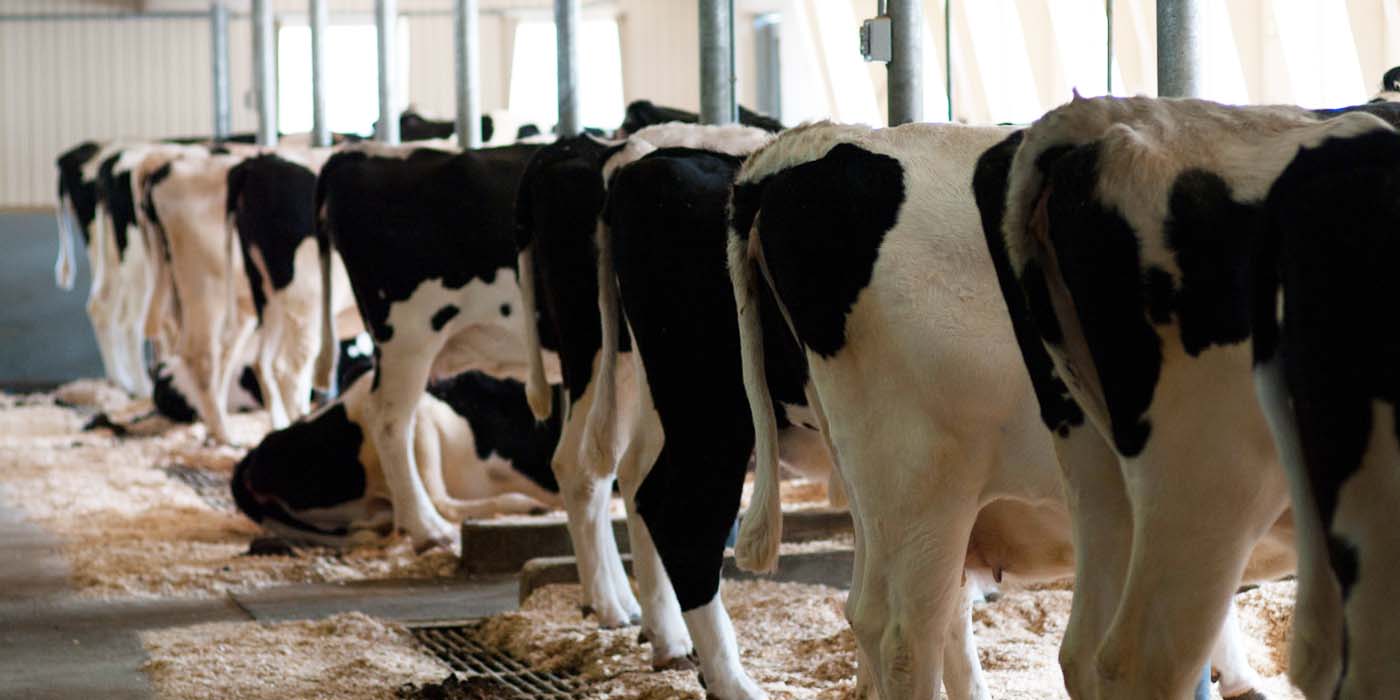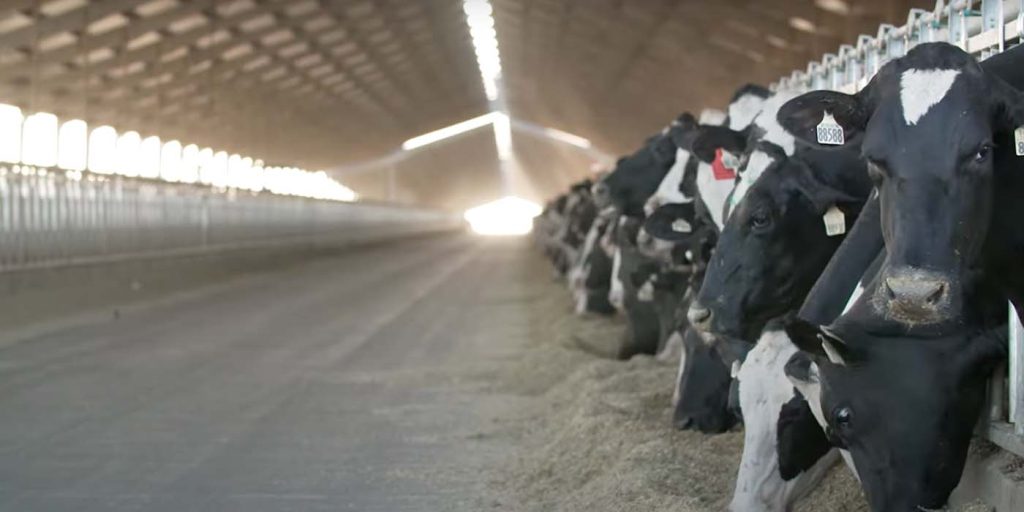
You read that right. Poop. Manure. Cow pies. US Dairy farming remains a massive contributor of greenhouse gas methane emitted by its endless lanes of cattle providing milk to the public. California in particular currently sits at as the US dairy farming mecca, but also accounts for nearly half of the methane emissions in the entire state. New recycling methods have been put into place and automakers like BMW have utilized their carbon offsets to power its EVs, but many argue this is greenwashing and the entire incentive program encourages more emissions, not less.
Over the past decade, biogas energy derived from animal waste has become a widely popular option for dairy farmers as an additional income stabilizer. Energy gathered using methane digesters has led to automakers like BMW using those offsets to charge its electric vehicles with less guilt on its conscience, but analysts have cried “greenwashing” as these methods not only produce the same environmental impact as fossil fuels, but also encourage dairy farms in the United States to increase emissions.
In 2011, California began an incentive program called the low carbon fuel standard (LCFS) which rewards dairy farmers for converting their methane into energy that can then be sold to other companies, like automakers for example, as offset credits. The concept of offsets is an entirely different debate we will save for another day, but in spirit, this idea sounds beneficial although we’d argue a complete focus on natural resources like wind and solar prove better in the long run.
In fact, several scientists and environmental advocates agree as much. A January 2022 report from the Union of Concerned Scientists relayed the following as it pertains to manure biomethane analysis:
We recognize that the capture and productive use of waste biomethane generated by anaerobic digestion (AD) from manure lagoons is a useful mechanism to mitigate methane pollution and can also replace a small amount of fossil methane use in energy and industrial applications.
However, the system remains flawed and so does its priorities. The experts argue that the LCFS in particular awards credits to farmers at a much higher magnitude than the cost to operate and maintain a methane digester. The aforementioned study goes on to say it believes the value of LCFS credits for large, confined animal feeding operations (CAFO) like California’s dairy farms, massively exceeds the costs of recovering the biomethane itself.
Furthermore, the biomethane energy still burns the same as fossil fuels, despite being marketed as a clean alternative. This is where the topic of greenwashing comes into play, but how exactly is BMW involved in a biogas industry projected to more than double globally to $126.2 billion by 2030? Like many things dairy related, it starts in California.

BMW’s biomethane energy offsets border greenwashing
In April of 2021, BMW Group announced a new venture as the first automaker to begin collaborating with dairy farms in California to offset the charging carbon emissions from its EVs. At the time, BMW relayed that credits through the LCFS enable charging incentives for drivers participating in its ChargeForward program that began around the same time.
These collaborations included Straus Organic Dairy Farm and CalBio who builds the methane digestors farms use. BMW North America’s energy services Manager, connected eMobility Adam Langton spoke at the time:
Our sustainability mission isn’t simply about reducing carbon emissions but making sustainability practices financially attractive for the long-run, so that these practices can expand and help our partners thrive. Dairy biodigesters are an example of an energy technology that not only reduces carbon emissions in a sustainable way but also offers a new revenue stream to farmers and their communities. In the future, we hope to use this collaborative model we have created in California to support more biodigester development in the US and ultimately bring more clean energy sources to our customers.
Third-generation farmer and owner of Bar 20 Dairy Steve Shehadey shared a similar sentiment in the video you can view below, explaining that no matter your farm’s dairy output, farmers have no control over the fluctuating prices of milk:
There’s times when you’re making money, there’s times when you’re losing money. And so, the concept of being able to produce energy or power was attractive because, if you can stabilize some income, it helps to you get you through the tough times.
According to Shehadey, Bar 20’s two solar projects and the methane digester produce an excess of 3 million kWh of power more than what the dairy farm needs to operate. The implementation of renewables like solar on farms is commendable, and capturing methane to recycle is a better option than letting it simply enter the Earth’s atmosphere.
However, there is greenwashing at play here no matter how BMW or anyone else tries to spin it, as these recycled gases are still emitting hefty carbon emissions and are empowered by an incentive program that rewards farms for the more stinky gas they produce.

A 2022 article by the Guardian points to the same research by the Union of Concerned Scientists, arguing that the environmental benefits of biogases are immensely exaggerated and the LCFS prioritizes farm gas (a combustion-based source of energy) over other renewables like solar and wind.
According to a 2018 analysis by researchers at UC Davis, methane digesters are likely not profitable without the government grants and subsidies, finding it costs $294 a year to produce $68 of gas from one cow, not including the massive upfront cost of installing the digester itself.
This is where it gets interesting.
According to a 2021 analysis by Aaron Smith, professor of agricultural economics at UC Davis, LCFS credits generate a subsidy of $1,935 a year per cow. If dairy farmer’s needed a reason to start recycling cow poop, that’s a pretty lucrative one, especially in a fluid pricing market for dairy – having a financial contingency for selling excess energy feels like a no brainer for farmers, especially those with large operations.
A main argument by the Union of Concerned Scientists is that subsidies in the LCFS vastly eclipse the cost of producing the methane gas, disproportionally benefiting the largest and most pollutive dairy farms. On an even more disheartening note, these incentives threaten dairy industry consolidation, where the largest farms get bigger, and the smaller ones can no longer compete. Not to mention that dollar signs attached to biogas production could sway farmers away from cleaner sources of renewable energy, again such as wind and solar. Per its study:
The LCFS is structured to require producers of polluting transportation fuels to bear the costs of mitigating transportation fuel pollution. However, in the case of the manure biomethane, the majority of the climate pollution at stake is methane from manure, and the fossil methane displacement in the transportation fuel market is a relatively small contribution. Thus, in this instance the largest polluter is the one receiving a large subsidy.
The lifecycle basis of the LCFS is supposed to ensure that support for low carbon fuels is based on a comprehensive assessment of their climate benefits. However, in this instance, this structure is functioning as poorly designed offset program with transportation fuel users paying an extremely high price for manure methane mitigation. This is not good transportation fuel policy or good agricultural methane mitigation policy.
It’s completely understandable why California dairy farmers who participate in methane biofuel production thanks to the current subsidies in place to their benefit. It’s truly doubtful that there is ill intent toward the environment in this process, as it does provide a partial solution to a serious emissions problem in the state. However, its benefits are highly exaggerated to the point of greenwashing, so it’s tough to give companies like BMW a pat on the back for their collaborations in the venture.
There are certainly cleaner ways to power EVs, especially without carbon offsets.
FTC: We use income earning auto affiliate links. More.



Comments